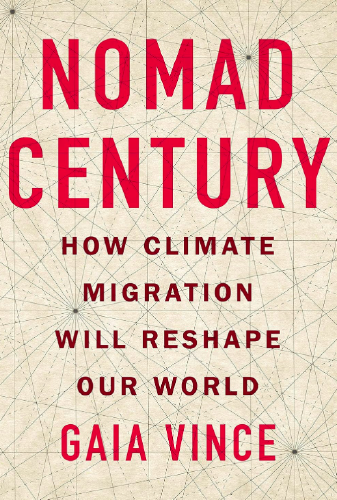
Nomad Century
Climate migration solutions and the political challenges of implementing them
Hopeful and solution-focused, with cursory introductions to dozens of policy proposals in each chapter.
I didn’t find this book to be too bleak or pessimistic. In fact, the scientific optimism can at times feel a bit politically naive, especially in terms of the degree to which climate migration should/might be embraced by receiving countries, rather than — more realistically — leading to the growth of far right xenophobic movements and resource wars — problems for which, this book provides no concrete solutions.
I appreciate the urban design and policy studies described in this book, especially as related to building housing that can address and evolve with the needs of migrant communities — the cases that have worked and failed in Amsterdam and Australia. Overall, the chapters are rich with inspiring anecdotes - for alternative energy solutions, urban development and permaculture, rewilding migration corridors for animals and humans alike - I found the reading to be very quick and easy to digest, since it provides a broad overview without going into great depth on any single solution. But I appreciate the author’s positive energy, which guides each chapter forward page by page like a marching drum, without mincing words on the very bleak conditions ahead that we will need to endure.
Vince shows how our planet actually has more than enough natural resources to sustain us if we recycle, desalinate, harvest solar power, and course-correct to make better use of the materials we have. She also admits that technological solutions are easier to come by than policy consensus and cultural change.
Here is where I’m left a little disappointed — that some of the most difficult questions, by her own admission, are essentially left unanswered: how can the necessities of climate migration be acknowledged internationally, and given humanitarian support, in the face of a political climate of intensifying xenophobia and racist nationalism in the US and Western Europe, which increases year by year with additional resource scarcity? Are there cases where democracy limited to the privileged few who have membership within a nation-state make broader humanitarianism freedom difficult or impossible? If so, what can be done, for a more democratic stewardship of the earth? What does it mean to be a “citizen of the United Nations” — as the author eluded to, but did not elaborate much on? How will our current asylum and refugee systems be taxed by climate disaster pressures far beyond intended capacities? How can these systems be reformed in the face of populist antagonism and violence? How can technological solutions keep apace with potential social unrest? What can be done to organize across governing bodies to provide for fair and planned responses to necessary migration, to ameliorate the suffering?
I enjoyed this book very much, and appreciate Gaia Vince as a writer, editor, and scientifically-informed cultural worker. But in light of recent anti-immigrant civil unrest in the UK, I hope she will continue to write more about the complexities (and irate follies) that stand in the way of arriving at human solutions to these human-made problems. I also hope she would, with the same methodical optimism, analyze detailed case studies and provide possible solutions to the political conundrums that preclude technological progress.